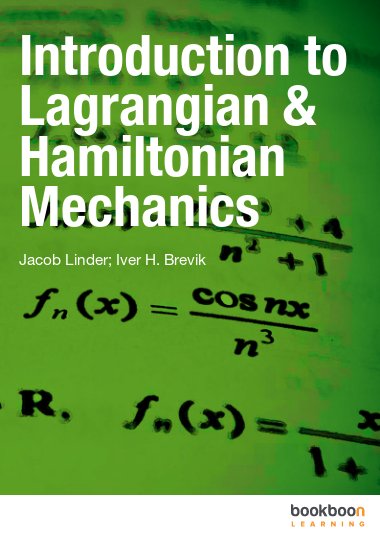In both classical and quantum mechanics, the Lagrangian and Hamiltonian formalisms play a central role. They are powerful tools that can be used to analyze the behavior of a vast class of physical systems. The aim of this book is to provide an introduction to the Lagrangian and Hamiltonian formalisms in classical systems, covering both non-relativistic and relativistic systems. The lectures given in this course have been recorded on video and uploaded on YouTube. At the beginning of each chapter we provide a link to the YouTube-videos covering that particular chapter. It is our goal that students who study this material afterwards will find themselves well prepared to dig deeper into the remarkable world of theoretical physics at a more advanced level. We have carefully chosen the topics of this book to make students proficient in using and understanding important concepts such as symmetries and conservation laws, the special theory of relativity, and the Lagrange/Hamilton equations.


كتاب دراسي مجاني
Introduction to Lagrangian & Hamiltonian Mechanics
الوصف
المحتوى
التعليقات
- Fundamental principles
- Notation and brief repetition
- Many-particle systems
- Constraints and generalized coordinates
- D’Alembert’s principle and Lagrange’s equations
- Levi-Civita symbol
- Friction and other velocity-dependent potentials
- Examples
- Lagrange’s equations and the variational principle
- Hamilton’s principle
- Derivation of Lagrange’s equations from Hamilton’s principle
- Variational calculus
- Hamilton’s principle for non-holonomic systems
- Conservation laws and symmetries
- Hamilton’s equations
- Legendre transformations
- Going from Lagrangian to Hamiltonian formalism
- The two-body problem: central forces
- Reduction to equivalent one-body problem
- Equations of motion
- Equivalent one-dimensional problem
- The virial theorem
- The Kepler problem
- Scattering cross section
- Kinematics and equations of motion for rigid bodies
- Orthogonal transformations and independent coordinates
- Transformation matrix and its mathematical properties
- Formal properties of the transformation matrix
- Euler angles
- Infinitesimal transformations
- The rate of change of time-dependent vectors
- Components of ! along the body axes
- The Coriolis force
- Angular momentum and kinetic energy
- The Euler equations
- Free rotation of rigid body; precession
- Heavy symmetric top with one point fixed
- Small-scale, coupled oscillations
- Coupled oscillators
- Application to a triatomic linear symmetric molecule (CO2)
- The theory of special relativity
- Introductory remarks
- Lorentz transformations
- Choices of metric
- Covariant 3+1 dimensional formulation
- Maxwell’s equation, 4-potential, and electromagnetic field tensor
- Relativistic mechanics and kinematics
- The relativity of simultaneity
- Canonical transformations
- Transformation of phase space
- Poisson brackets
- Hamilton-Jacobi theory
It has all the parts and subparts needed to begin to understand what Lagrange and Hamiltons contribution to the physics of mechanical motion, how to formulate and apply. Good book if you commit yourself
